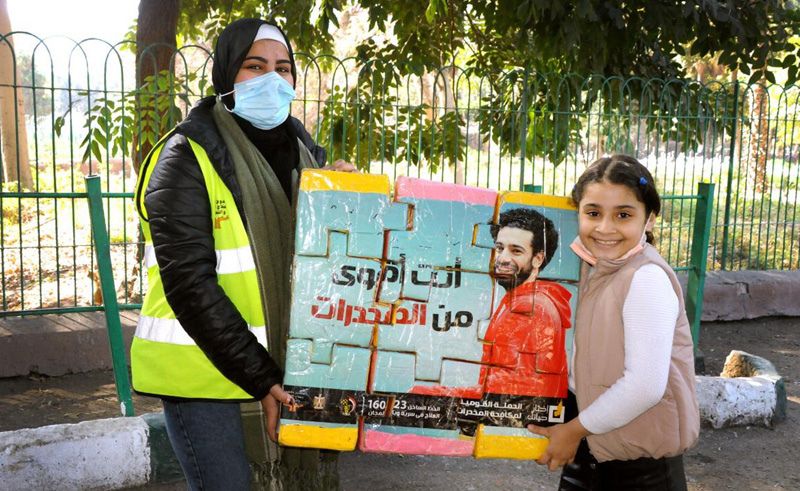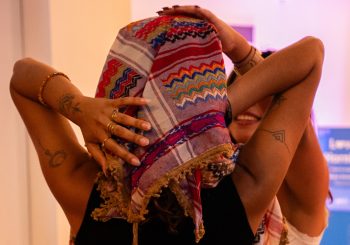Drug abuse is an issue that impacts many Egyptians, women and men alike. The fight against drug abuse is continuous with the government implementing a national plan to curb drug abuse and promote recovery.
Drug or substance abuse differs from drug addiction. Abusing involves using legal or illegal substances such as alcohol or prescription medicine excessively or improperly, and drug addiction is a disease where the user compulsively seeks out a drug and can not function properly without it.
According to a survey by the Egyptian Fund for Drug Control and Treatment of Addiction (FDCTA), Egyptians start abusing drugs due to peer pressure, leading at 35.2 percent, followed by stress at 34.8 percent, depression at 30.6 percent, the need to work longer hours at 29.1 percent, and the desire to boost confidence at 24.9 percent.
Fourty-eight percent of Egyptians seeking treatment were primarily using hashish (a cannabis herb), according to the FDCTA’s data in 2020. Tramadol, a pharmaceutical opioid, comes in second, with 22.5 percent of Egyptians using it, 17 percent using synthetic drugs such as amphetamines and synthetic cannabinoids, and 6 percent using opium.
Heroin emerged as the most abused drug in Egypt in 2022, with 32.15 percent of abusers using it, followed by 31.9 percent using hashish, 18.45 percent using tramadol, and 17 percent using synthetic drugs.
The FDCTA’s data revealed that 38.33 percent started using between the ages of 15 and 20, while 37.84 percent started between the ages of 20 and 30, according to Amr Osman, the director of FDCTA and assistant to the minister of social solidarity.
He stated that hashish was the most commonly used substance, accounting for 37.09 percent, followed by heroin at 35.78 percent, tramadol at 20.73 percent, multiple drug use at 16.53 percent, and synthetic drugs such as Astrox, Fodo, Boudr, and Chabu, accounted for 16.53 percent.
Men lead in substance abuse
For every female substance dependence, there were seven males, a 2018 report by the General Secretariat of Mental Health and Addiction Treatment (GSMHAT) of the MOHP revealed.
A survey conducted by Kafr ElSheikh University during the academic year 2018-2019, involving 2552 students, revealed a significant gender disparity in substance use. Men reported higher rates of cigarette, alcohol, tramadol, hashish, and bhang consumption compared to women, as well as a likelihood of developing a drug addiction.
Although women make up a minority of patients, Egyptian men tend to start using drugs at an earlier age and experience a longer duration of addiction, a 2022 study by El Hussein University Hospital documented.
Among women, Tramadol is the most commonly used substance, with 48.75 percent of users reporting its use, followed by heroin at 44.84 percent, and hashish at 32.38 percent.
Additionally, data shows that women do not seek help for drug addiction treatment as much as men. The 2019 National Drug Observatory (NDO) at GSMHAT revealed that 98.7 percent of treatment seekers were males and 1.3 percent were women.
You are stronger than drugs
To combat substance abuse and provide addiction treatment, the FDCTِِA launched the campaign, Enta Aqwa Mn el Mokhadarat (You Are Stronger Than Drugs), in 2015. Since its launch, the percentages of substance abuse and addiction have decreased, and the demand for addiction treatment has multiplied fourfold.
From 2015 to 2020, a substantial decline in drug abuse was recorded, as the number of Egyptians aged 15 to 60 abusing drugs became 5.9 percent as opposed to 10 percent in 2014, according to Amr Osman, the director of FDCTA and assistant to the minister of social solidarity.
On the other hand, the number of Egyptians aged 15 to 60 who were addicted to drugs decreased from 3.3 in 2015 to 2.4 percent in 2020, an FDCTA report revealed.
Alongside the campaign, a comprehensive database documenting beneficiaries of treatment services was created, with an average of 170,000 individuals served annually. A separate database monitoring drug screening campaigns targeting government employees, school bus drivers, and highway drivers was also created.
Treatment services and awareness programs have been brought to redeveloped areas, benefiting nearly 20,000 patients. Awareness efforts have included home visits and community activities involving 7,500 children, alongside multiple sports events.
Life skills programs for youth are conducted in 35 universities and 860 youth centers, with 17 camps established to train volunteers. The initiative also aims to create “drug-free villages” in 740 villages across 18 governorates, raising awareness and providing free treatment services.
The National Plan for Reducing Drug Demand (2024-2028) has been meticulously crafted and reviewed in collaboration with the United Nations Office on Drugs and Crime, involving coordinated efforts with various stakeholders.
This multifaceted approach highlights Egypt’s commitment to tackling drug abuse through prevention, treatment, and community engagement.






Comment (1)
[…] post Roadmap to Recovery: Egypt’s National Plan Against Drug Abuse first appeared on Egyptian […]